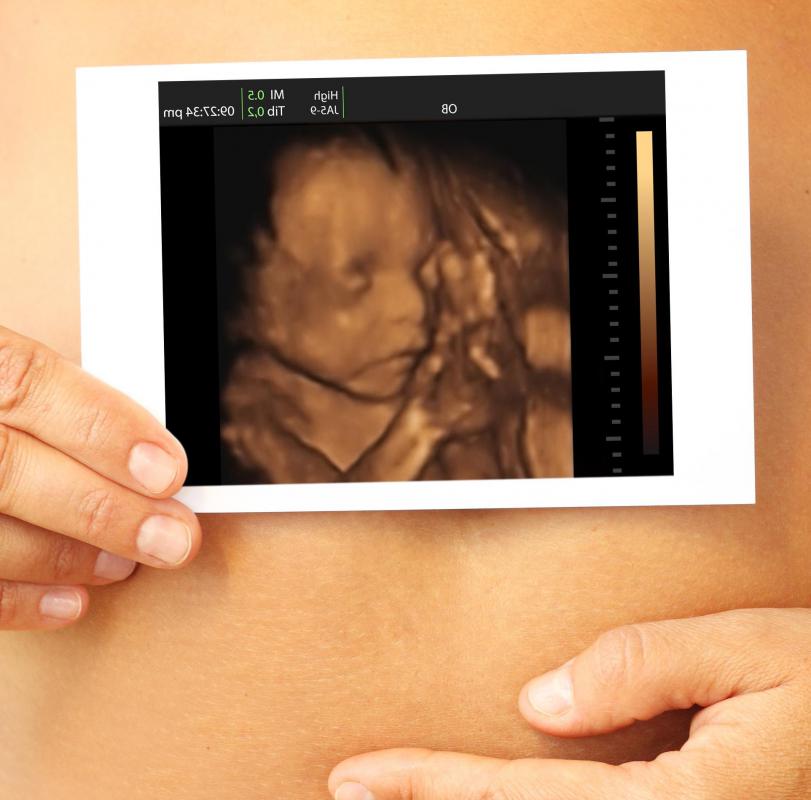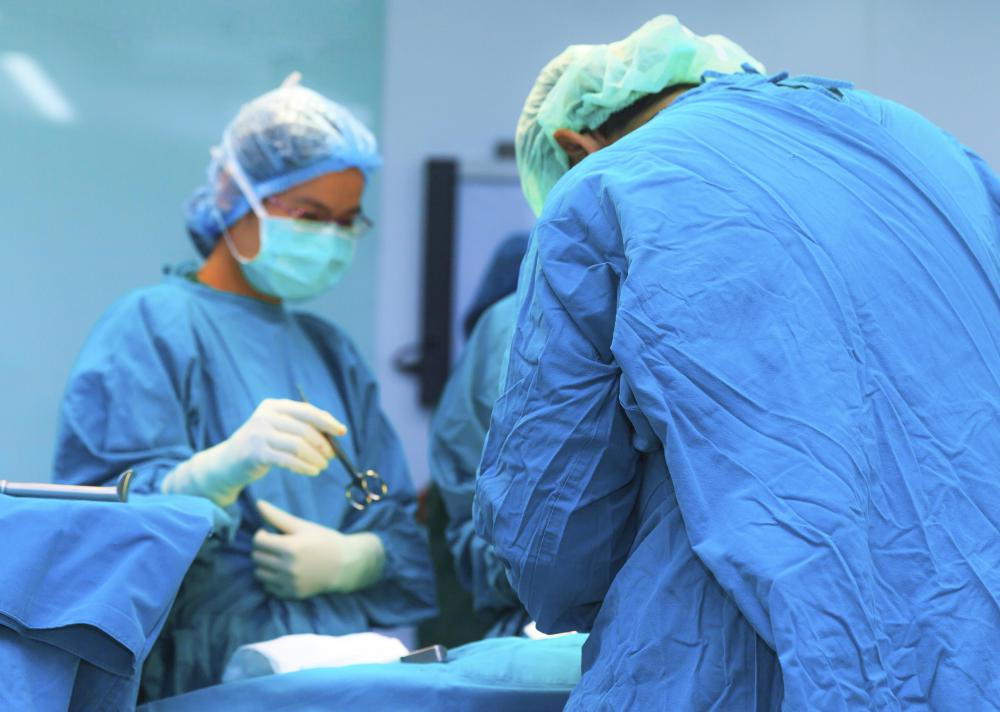At TheHealthBoard, we're committed to delivering accurate, trustworthy information. Our expert-authored content is rigorously fact-checked and sourced from credible authorities. Discover how we uphold the highest standards in providing you with reliable knowledge.
What Is a Multicystic Dysplastic Kidney?
Multicystic dysplastic kidney is a type of disease that causes multiple cysts to grow and take over the healthy tissue of the kidney during fetal development. The development of these cysts prevents the affected kidney from working properly, and in many cases, there is no kidney function at all. Most cases of multicystic dysplastic kidney are diagnosed before birth as a result of the use of prenatal ultrasound. Treatment varies for each individual but can range from careful monitoring to the surgical removal of the affected kidney. Any questions or concerns about multicystic dysplastic kidney or the most appropriate treatment options for an individual situation should be discussed with a doctor or other medical professional.
The exact cause for the development of a multicystic dysplastic kidney is not clearly understood, although it is widely believed to be related to a urinary blockage during the fetal stage of development. Studies have shown that there might be a genetic connection in some cases of multicystic dysplastic kidney. In most instances, only one kidney is affected by this disease, although it is possible for both kidneys to be affected. Sometimes, the affected person is born with one diseased kidney, and the other kidney is missing completely.

If both kidneys are affected by this congenital disease, or if one kidney is missing at the time of birth, the condition is fatal, because the child cannot survive without at least one functional kidney. Only one kidney is usually affected, however, and it is almost always the left kidney. Over time, the diseased kidney tends to shrink in size because it is unable to receive proper blood flow. Nerve damage is possible as the cysts continue to overtake the kidney, and this might result in moderate to severe pain. The diseased kidney is monitored and usually is removed when the child is old enough to safely undergo surgery.

In more than half of the cases of multicystic dysplastic kidney, there is a slight problem affecting the remaining kidney, although this typically does not affect overall health or life expectancy. The remaining kidney usually is larger than normal, which is a natural response to the kidney being forced to do the work of two kidneys. To protect the healthy kidney, a diet that is low in sodium and protein is generally advised, and periodic blood tests or ultrasounds might be recommended to monitor the health and function of this kidney.
AS FEATURED ON:
AS FEATURED ON:















Discussion Comments
@cloudel - My daughter was also born with a multicystic dysplastic kidney. She, too, was one of the lucky ones to have one functioning kidney and the chance to have the bad one removed.
My whole family changed their eating habits when she came into our world. We didn’t want her to grow up craving the things that we were eating that were bad for her, so we stopped drinking sodas and coffee. We started eating chicken and fish more often than red meat, and we used less salt on foods we prepared. We tried to eat more vegetables and fruit than meats.
Because of the way we taught her to eat, she is healthy today. She developed eating habits that will preserve her kidney.
My first baby was born with one multicystic dysplastic kidney and the other kidney missing. He did not make it. I was so heartbroken, and I was afraid that if I got pregnant again, my next child might have the same condition.
My desire to have a child overcame my fear, and I gave birth to another baby the following year. To my horror, he was born with the same condition. However, he had one healthy kidney. The doctor said he would just monitor his condition for a few years.
When my son was four, he had the affected kidney removed. His remaining kidney functions just fine, but since it is slightly bigger than normal, we take the precaution of limiting his salt and meat intake.
@StarJo - I have polycystic kidney disease as well, and I noticed a few more similarities. One of my kidneys is covered with more cysts than the other, and it is larger. That kidney just happens to be the left one.
The article mentioned pain being prevalent as the cysts continue to grow. I frequently experience abdominal and back pain from my disease. It arrives as a sharp, stabbing pain, and I often buckle over, unable to straighten. I have to take a pain pill when this happens, as it can last for hours.
Kids that survive with a multicystic dysplastic kidney until they are old enough to have surgery are fortunate. They can get rid of their condition through removal of the affected kidney. We have to hope for a transplant late in life when our kidneys can no longer function.
This condition sounds a lot like the one that I have, polycystic kidney disease. However, I did not know that I had it at birth. I didn’t show signs of it until my mid-twenties.
Like a multicystic dysplastic kidney, both of my kidneys are slowly being overtaken by many cysts. As the disease progresses, it becomes harder for my kidneys to do their job. I have to take medication for high blood pressure, and I have to control my sodium and protein intake.
Unlike someone with a multicystic dysplastic kidney, I was born with both of mine, and both are affected by the disease. They will not shrink away one day, but a similarity is that I will likely need a transplant at some point in my life.
Post your comments